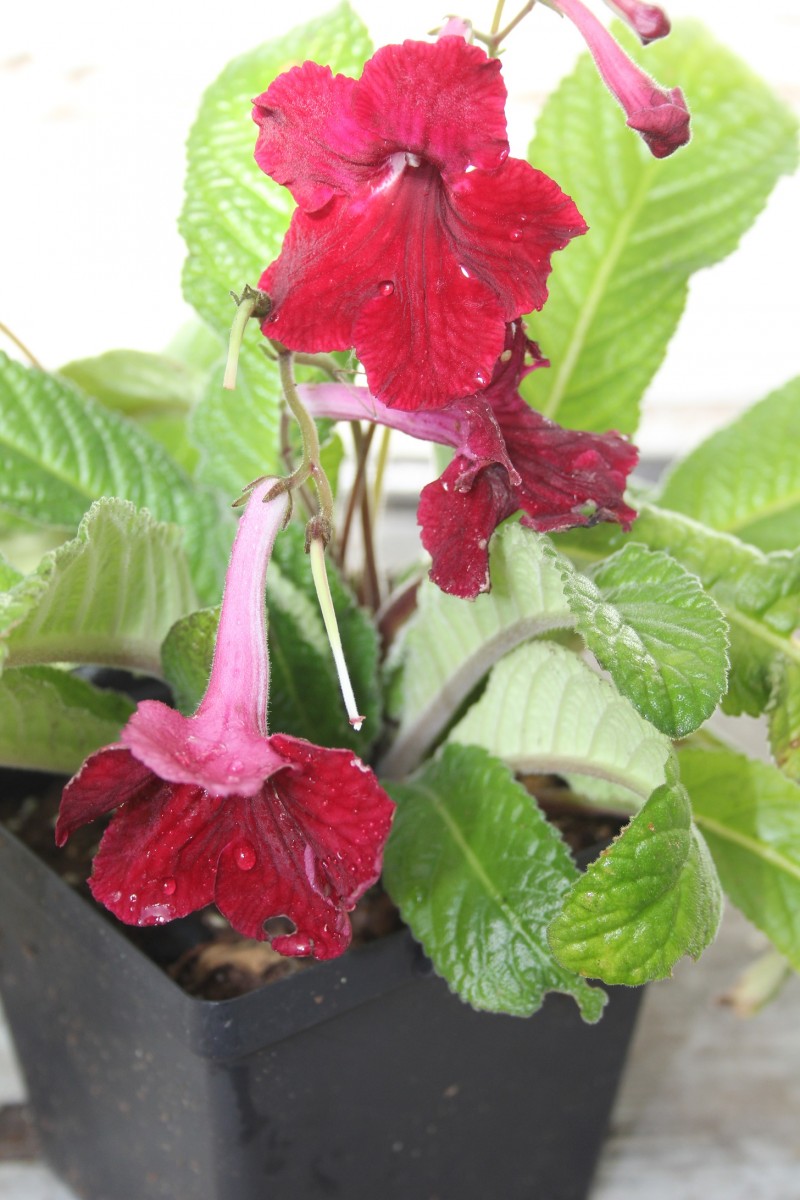
Cape Primrose, or Streptocarpus, is a genus of beautiful flowering plants that contains numerous species, most of which are easily grown in a heated greenhouse. These plants superficially resemble those of the genus Primula but are not related to them. In many ways, the five-petalled Cape Primrose flowers remind me of orchids. Each has somewhat of a lip, not as pronounced as an orchid’s, but distinctive just the same. When in full bloom, which can be year-round, Cape Primroses are often quite spectacular, and they come in a great many eye-catching colours, too.
The Afrotropical habitat of Streptocarpus plants gives clues to their care. Many originate from South Africa (hence the name “Cape” Primrose) where they inhabit wooded areas with relatively moist soil and some shade. Accordingly, my plants do well under a bench on the northwest side of my greenhouse. Here they get an hour or two of morning sun and then shade during the hottest part of the day. If I sometimes forget to water them in this out-of-the-way location, a good soaking will revive the wilted leaves, and the plants seem none the worse for wear. Under watering them is far better than overwatering, which will rot the roots and kill the plant.
Streptocarpus plants are not too fussy regarding temperature. They survive quite nicely in my heated greenhouse even though it sometimes gets as low as 45˚F there in the depths of winter. If winter temperatures are going to plunge, I bring my oldest Cape Primroses into my basement and set them under fluorescent lights. One warm-white bulb and one cool-white bulb give them a fairly broad light spectrum, which keeps them quite happy, as does the basement temperature, which never drops below 50˚F in winter.

Selecting and cultivating a Streptocarpus plant is not difficult. First, look for healthy light green leaves and enough flowers to determine colour. You don’t need a plant with a profusion of blooms because flower production will increase as the plant grows. When you arrive home, repot the plant into a four- or six -inch pot using a good quality peat-based potting soil with perlite to lighten it. The soil should be slightly acidic and just moist after repotting and kept that way as you’re waiting for blooms. As soon as buds appear, add a little high-potash fertilizer, such as Miracle-Gro “Bloom,” to help promote flowering. When the plant is in full bloom, it may stay in flower for months, giving you maximum enjoyment.










